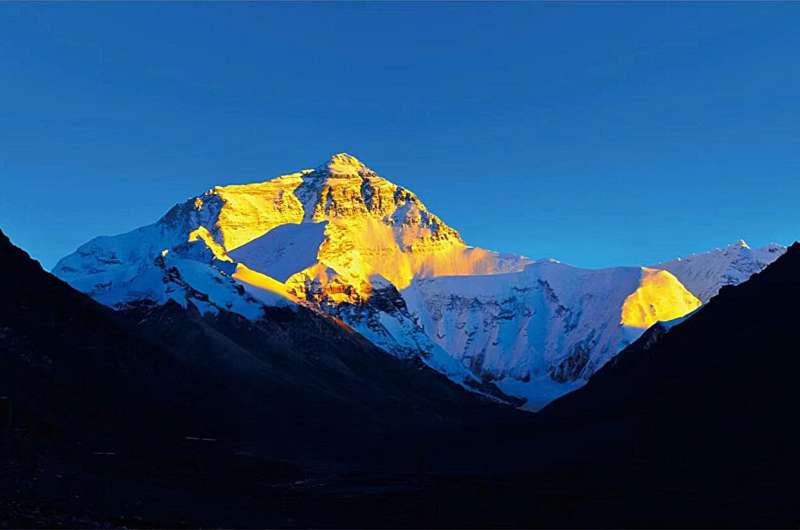Tibetan plateau’s spring heat source exerts delayed influence on Northeast China’s summer precipitation
In a recent study published in Advances in Atmospheric Sciences, researchers from the Institute of Atmospheric Physics at the Chinese Academy of Sciences have uncovered the impact of the spring atmospheric heat source (AHS) over the Tibetan Plateau on summer precipitation in Northeast China, highlighting the crucial role played by soil moisture in this process.
For decades, the spring AHS over the Tibetan Plateau has been recognized as a key modulator of the Asian summer monsoon and the subsequent summer rainfall in southern China. Whether it affects summer precipitation in Northeast China has remained unclear.
This study investigates data from 1961 to 2020 to understand the connection and shows that a stronger spring AHS over the Tibetan Plateau leads to increased summer rainfall in Northeast China, with soil moisture in the Yellow River basin and North China playing a crucial role.
In spring, an intensified AHS facilitates moisture transport to eastern China, resulting in more precipitation in the Yellow River basin and North China. This increase in soil moisture regulates local temperatures by reducing surface temperatures and sensible heat.
The memory effect of soil moisture allows increased sensible heat to persist into mid-summer, reducing the temperature difference between land and sea. This has a cascading effect, weakening the southwesterly winds over the East Asia-West Pacific region and impacting convective activities in the South China Sea and the tropical West Pacific region.
Consequently, it alters the atmospheric circulation in the East Asia-Pacific region, leading to cyclonic circulation anomalies and excessive precipitation in Northeast China.
Dr. Han Yizhe, the lead author of the study and a postdoctoral researcher, emphasized that this research not only unravels the mechanisms behind the influence of the spring atmospheric heat source over the Tibetan Plateau on summer precipitation in Northeast China but also contributes to enhanced scientific prediction of summer rainfall in the region.
More information:
Yizhe Han et al, Time-lagged Effects of the Spring Atmospheric Heat Source over the Tibetan Plateau on Summer Precipitation in Northeast China during 1961–2020: Role of Soil Moisture, Advances in Atmospheric Sciences (2024). DOI: 10.1007/s00376-023-2363-8
Citation:
Tibetan plateau’s spring heat source exerts delayed influence on Northeast China’s summer precipitation (2024, January 10)
retrieved 10 January 2024
from https://phys.org/news/2024-01-tibetan-plateau-source-exerts-delayed.html
This document is subject to copyright. Apart from any fair dealing for the purpose of private study or research, no
part may be reproduced without the written permission. The content is provided for information purposes only.

In a recent study published in Advances in Atmospheric Sciences, researchers from the Institute of Atmospheric Physics at the Chinese Academy of Sciences have uncovered the impact of the spring atmospheric heat source (AHS) over the Tibetan Plateau on summer precipitation in Northeast China, highlighting the crucial role played by soil moisture in this process.
For decades, the spring AHS over the Tibetan Plateau has been recognized as a key modulator of the Asian summer monsoon and the subsequent summer rainfall in southern China. Whether it affects summer precipitation in Northeast China has remained unclear.
This study investigates data from 1961 to 2020 to understand the connection and shows that a stronger spring AHS over the Tibetan Plateau leads to increased summer rainfall in Northeast China, with soil moisture in the Yellow River basin and North China playing a crucial role.
In spring, an intensified AHS facilitates moisture transport to eastern China, resulting in more precipitation in the Yellow River basin and North China. This increase in soil moisture regulates local temperatures by reducing surface temperatures and sensible heat.
The memory effect of soil moisture allows increased sensible heat to persist into mid-summer, reducing the temperature difference between land and sea. This has a cascading effect, weakening the southwesterly winds over the East Asia-West Pacific region and impacting convective activities in the South China Sea and the tropical West Pacific region.
Consequently, it alters the atmospheric circulation in the East Asia-Pacific region, leading to cyclonic circulation anomalies and excessive precipitation in Northeast China.
Dr. Han Yizhe, the lead author of the study and a postdoctoral researcher, emphasized that this research not only unravels the mechanisms behind the influence of the spring atmospheric heat source over the Tibetan Plateau on summer precipitation in Northeast China but also contributes to enhanced scientific prediction of summer rainfall in the region.
More information:
Yizhe Han et al, Time-lagged Effects of the Spring Atmospheric Heat Source over the Tibetan Plateau on Summer Precipitation in Northeast China during 1961–2020: Role of Soil Moisture, Advances in Atmospheric Sciences (2024). DOI: 10.1007/s00376-023-2363-8
Citation:
Tibetan plateau’s spring heat source exerts delayed influence on Northeast China’s summer precipitation (2024, January 10)
retrieved 10 January 2024
from https://phys.org/news/2024-01-tibetan-plateau-source-exerts-delayed.html
This document is subject to copyright. Apart from any fair dealing for the purpose of private study or research, no
part may be reproduced without the written permission. The content is provided for information purposes only.
